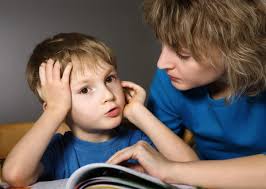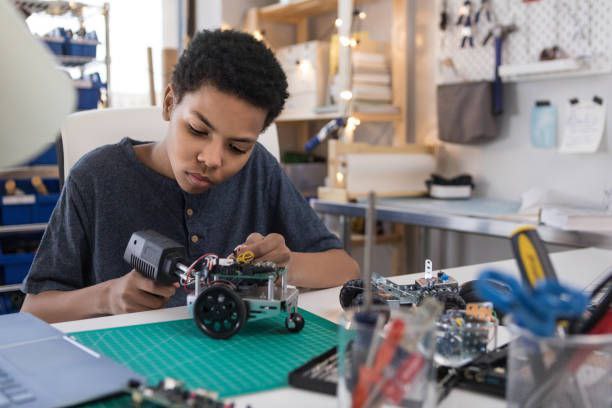
“Who is a creative child?” is a question we are going to answer in this article. Creativity, most of the time, is not a function of high academic IQ. However, there is no one answer to this question because creativity can manifest itself in many different ways in children.
A child who is creative in crafts might not be creative in cooking, gardening, and other activities. Some key factors that can influence a child’s creativity include their individual interests, abilities, and talents.
Additionally, creativity can be nurtured and developed through activities and experiences that encourage and support its growth.
In this article, we will look at what a creative child is, the characteristics of a creatively gifted child, how to support creativity in a gifted child, how to nurture creativity in children, and what resources are available for developing creativity.
A Creative Child: The Current Perspective
Who is a creative child?
There is no definitive answer to this question, as people are creative in different ways.
A creative child can be seen as one who displays a high-performance capability in one or more areas such as artistic and creative work, administration, and operational aspects of life.
However, some key factors that may indicate someone is a creative child include a strong imagination, a propensity for novelty, and a tendency to be creative in every aspect of life.
Characteristics of a Creative Gifted Child
Creativity is not limited to any one field. Artists, musicians, and writers can all be considered creative people. The following are some characteristics that are commonly associated with creatively gifted children.
1. The child can see connections between different ideas.
2. He always comes up with new and innovative ideas.
3. He views situations from a different perspective.
4. He sees the potential in things that other children might not see.
5. A creatively gifted child studies patterns and connections others could not imagine.
6. A gifted child will always have a way around any problem.
7. They are often able to see the potential in things that others might not be able to see.
8. He sees light at the end of the tunnel when confronted with challenges
10. Have lots of energy and consequently don’t give up easily
9. They are risk takers
How to support creativity in a gifted child

How to support a gifted child
The ability to be creative is one of the most distinctive features between humans and animals. It is a skill that can be cultivated and strengthened with the right support and within the right environment. It can be a source of joy and satisfaction for both the child and the adults who surround them. There are a few things that you can do to help support creativity in your gifted child.
First, make sure they have plenty of stimulation and an opportunity to explore their creativity.
Secondly, teach them how to develop and use their imagination
Thirdly, provide creative resources to enable them to play and work on creative projects at home or in school,
Fourthly, enroll them in art, music, and other creative development mediums.
Another important way to support the creative child is to provide the child with constructive feedback.
Praise them when their ideas are good and encourage them when they need improvement.
Give them opportunities to explore and experiment with their creative abilities
Find and register them in creative outlets such as painting, sculpting, writing, music, and others.
Another way to explore creativity is to watch creative videos,
Read lots of books about different concepts and techniques of creativity
Encourage them to use different techniques, such as journaling and using prompts.
Help them to develop a positive self-confidence
Finally, teach them how to brainstorm more creative ideas,
This will help them to become better creators.
What are the resources for developing creativity?

There are many resources for developing ideas in children. The primary way children develop their creativity is by having fun with the creative resources available to them at home, in arts organizations, or in schools, which consist of creativity resources, creativity tools, and creative study guides.
Some of these creative resources include:
Raised Salt Painting Woods hammer and nails
Drawing materials Singing and Dancing
Strong imagination Roleplay
Old calendars Reading
Recycled materials Musical instruments
Drawing with Oil Pastel Books
The Back-And-Forth Drawing Game Wooden blocks.
Playdough Modeling Boxes
Marble Painting Glowing Dough
Water Balloon Painting Playing School at home
Finger Painting Building blocks
Making Masks Craft activities
Hand puppets Doodle art
Bead jewelry Gardening
Mini-Me (Small mother) Rock monsters
Reuse and Recycle Clay and dough
Please creativity development in a gifted child here

Conclusion
There is no one-size-fits-all answer to creativity because the best way to support creativity in a gifted child may vary depending on the child’s individual needs and personality.
However, the points enumerated above will help you support creativity in a gifted child.
If you want the child to learn more about creativity in the workplace, enroll the child in workshops or lectures.
However, some key things to keep in mind when thinking about creativity in children are that creativity is not a one-size-fits-all concept, and it can vary greatly from child to child.
Read more of our articles here: https://abundanceandkiddies.com/

Pingback: Critical Thinking: From The Gifted Child’s Perspective - PARENTING
Pingback: Who Is A Gifted Child?: The Unique Mind - PARENTING